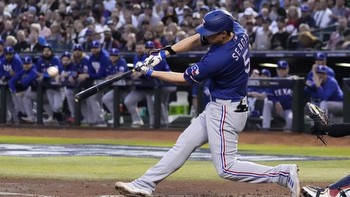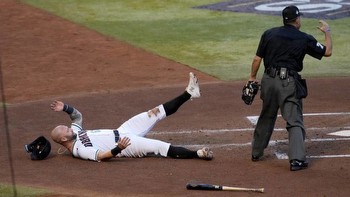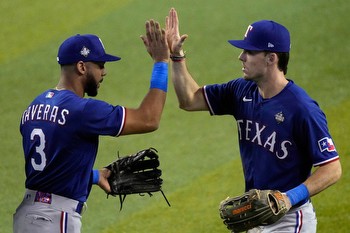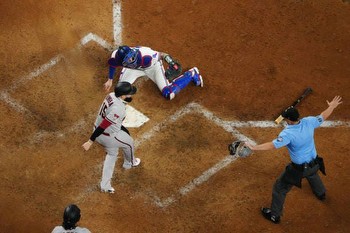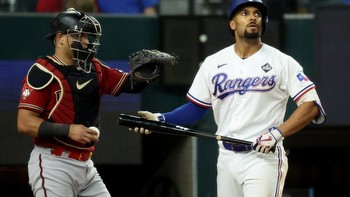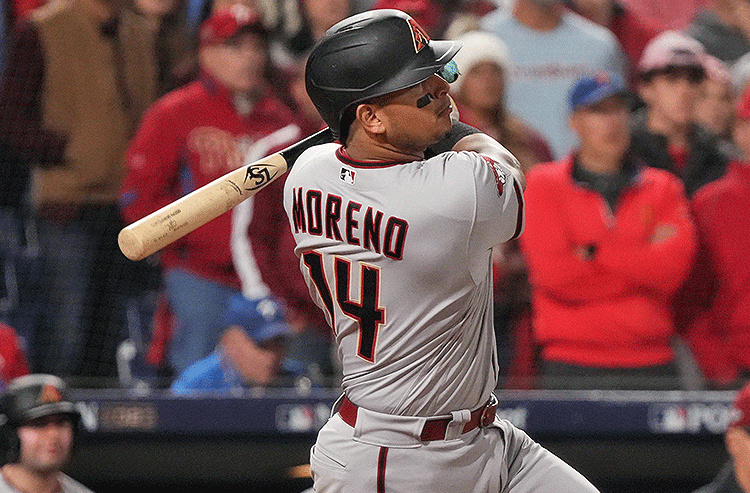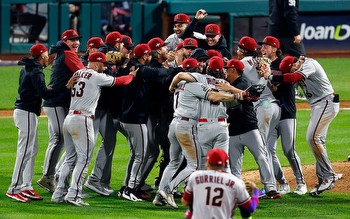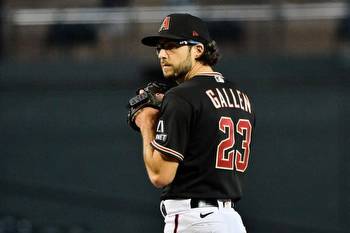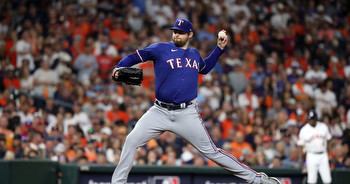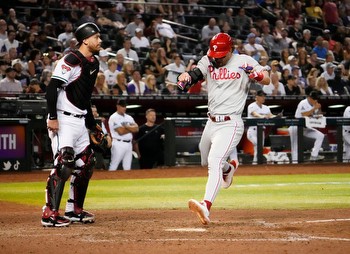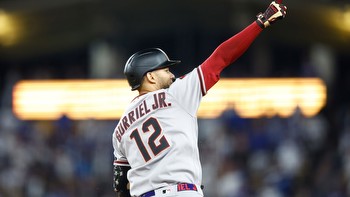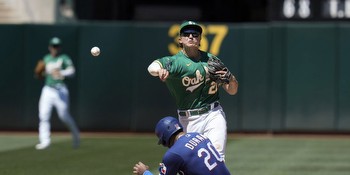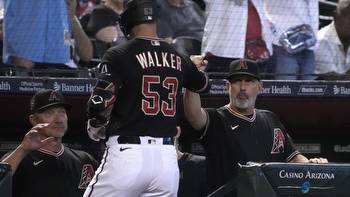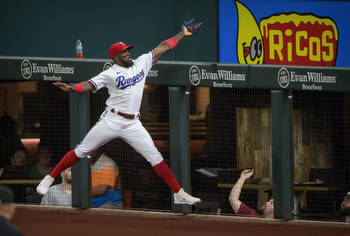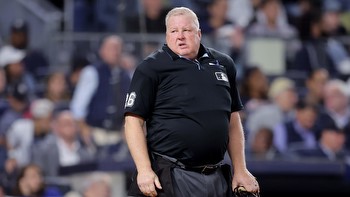Looking For Drama? Look No Further Than cWPA

On Monday, the Rangers and Diamondbacks played a classic at Chase Field. It started as a pitcher’s duel between Jordan Montgomery, who pitched beautifully over eight scoreless frames, and a cadre of Diamondbacks pitchers led by bulk man Slade Cecconi, who allowed the only run of the first eight innings on a solo shot off the bat of Adolis García. Then, things got chaotic. From the ninth inning on, the game swung from an 88.4% chance of a Texas win to an 81.3% likelihood for Arizona, then back to 95.1% odds in favor of the Rangers before a final swing back to the D-backs on a Tommy Pham walk-off double. Not to be confused for the heart rates of each team’s fans Monday evening, the win probability chart came out looking like this:
Last week, Ben Clemens wrote about how neat Win Probability Added is, and its merits as a part of the MVP discussion. While Ben’s piece made the great point that WPA is not “just a storytelling statistic,” lobbying for its use in measuring value over a season, its storytelling powers are indeed pretty remarkable. So much of the drama within Monday’s game was made quantifiable by measuring the shifts in win probability. Ketel Marte’s game-tying homer in the ninth was worth .467 WPA, or 46.7 percentage points of win probability; Nathaniel Lowe’s go-ahead double was worth .454; Tommy Pham’s walk-off was worth .754, the 11th-highest WPA value for any single play this year. That’s three hits that turned the game on its head, and then back on its feet, and then back on its head again.
But there’s another stat that can contextualize this masterpiece of a game even more. Championship Win Probability Added, or cWPA, which Baseball Reference added in 2020, is the ultimate narrative statistic. It takes the concept of WPA – how much a play or a player contributed to a team’s chances of winning a game – and scales it by the importance of the game with respect to the team’s chances of winning the World Series. For a single play, cWPA is equal to the difference in the team’s chances of winning the game before and after the play multiplied by the difference in the team’s chances of winning the World Series depending on whether they win or lose that game, according to Baseball Reference’s playoff odds. That gives us a value representing a delightfully simple concept: How much did a single play help a team reach its ultimate goal of winning a World Series? What more could you want out of a descriptive statistic?
The plays that won Monday’s game were that much more important because of how important the game itself was to both teams. After a truly dismal stretch from July to early August during which the D-backs went 7-25, they were surging again entering Monday, having increased their standing in our playoff odds from 13.4% to 38.5% by winning seven of their last nine – including five of six against a Padres team that had previously overtaken them in our playoff odds. They were a game behind the Cubs for the third Wild Card spot, and tied with the Reds and Marlins. The Rangers, meanwhile, were trying to stop a four-game skid that had matched their season long, weakening their odds of claiming the AL West title – down from 56.8% to 43.0% – with the Astros and the red-hot Mariners breathing down their necks. Just look at how much these lines have moved in this last week:
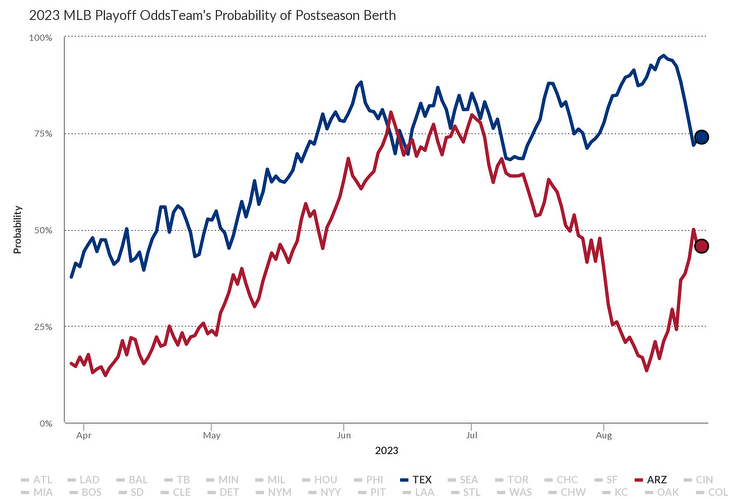
It’s safe to say that if Monday’s Royals–A’s game had played out exactly the same way pitch by pitch, it would have mustered only a fraction of the excitement that this game did – it would have had virtually no impact on the rest of the season, after all. But for the Diamondbacks and Rangers, cWPA makes the scale of the impact all the more clear.
By cWPA, Monday’s matchup featured three of the 30 biggest plate appearances of the season. With his ninth-inning home run, Marte added 0.45 percentage points to Arizona’s odds of winning the World Series, the 26th-highest cWPA for a plate appearance this year. An inning and a half later, Lowe’s two-run double represented a 0.43 point increase in the Rangers’ World Series odds, 28th on the list. And when Pham doubled in Marte and Geraldo Perdomo in the bottom of the 11th, the Diamondbacks chances swelled by 0.73 percentage points, making it the biggest swing of the season and tying the biggest regular-season plate appearance since the final days of the 2021 season. For further context, each of those hits had a higher cWPA than Christopher Morel’s walk-off home run to flip a 3-1 deficit in Chicago last week – which is saying a lot, given that Morel’s walk-off had a .658 WPA and thrust the Cubs into a playoff position.
Speaking of Morel, Pham isn’t the only one to deliver a signature moment for his team this month. Morel was the third player in a span of eight days to author his team’s biggest hit of the season by cWPA. On August 8 in Baltimore, Kyle Tucker, who leads baseball with 4.1 cWPA on the season, hit a ninth-inning grand slam off Félix Bautista, who leads all pitchers with 3.3 despite the events of that night. Tucker’s slam gave the Astros a 0.66 percentage-point increase in World Series odds, making it the second-most impactful PA by cWPA of any this season. Five days later, the Giants’ Patrick Bailey walked off the Rangers in the 10th inning to add .62 points to San Francisco’s chances, the fifth-highest cWPA in 2023. Pham and Lowe then joined that group on Monday, though Lowe’s effort was in vain. Then just last night, Adam Duvall’s go-ahead home run in the 10th inning in Houston boosted the Red Sox’ World Series odds by 0.58 points, the seventh-most for a PA this season:
Big Swings in August
I have a half-baked theory that our bias against small numbers may keep cWPA from having its full impact. It’s hard to imagine that the “biggest” regular-season hit in two years moved the World Series odds needle just 0.73 percentage points – after watching the game, I can imagine that number feeling underwhelming, especially without the context provided by comparison. This time of year, it may illustrate the impact more clearly to calculate the shift in playoff odds, which are more top of mind in August. But in reality, a shift of 0.73 points in World Series odds is deeply significant at this stage of the season, given that a good portion of the playoff contenders are hovering somewhere between 1% and 5% World Series odds today.
To some degree, that so few plays change championship odds by even a tenth of a percent underscores the futility of the regular season, as if to say “maybe none of this matters as much as we’re giving it credit for.” But the grind of the regular season is part of the beauty of the sport as well – so many pitches, plate appearances, and even games won’t seem to matter until they really do, and then you’ll wish you could have all the bad ones back.
What makes a baseball game great? The question welcomes debate and difference of opinion, but for me, two of the most foundational elements are a) uncertainty with regards to who will win and b) the stakes. And these are effectively the two components of cWPA: WPA measures the shifts in our expectations of who will win, and championship leverage index measures what a win would mean. This is what makes cWPA such an illustrative stat. Taken over the year, it can show which players made the most difference in reaching the pinnacle of the sport. In assessing awards, it’s generally agreed upon these days – and rightfully so – that team performance and playoff position shouldn’t come into play, and to be clear, cWPA is best left out of those discussions, too. But in a pure sense of value – which players were the most important to their teams in getting them as far as they can go – cWPA tells a pretty interesting story.
The way I see it, baseball statistics have two main purposes: to contextualize what has happened and to predict what is most likely to in the future. In predictive analysis, WPA, and cWPA by extension, have little to offer – they’re extremely context-dependent statistics, and generally speaking, the more outside context you include in a measure, the less well it will do at predicting the future. But if you’re looking for a measure of drama, a measure of how big a moment is, cWPA is a pretty good place to start. What it tells us this month is that there have been plenty of big moments dialing up the drama of these playoff races.









